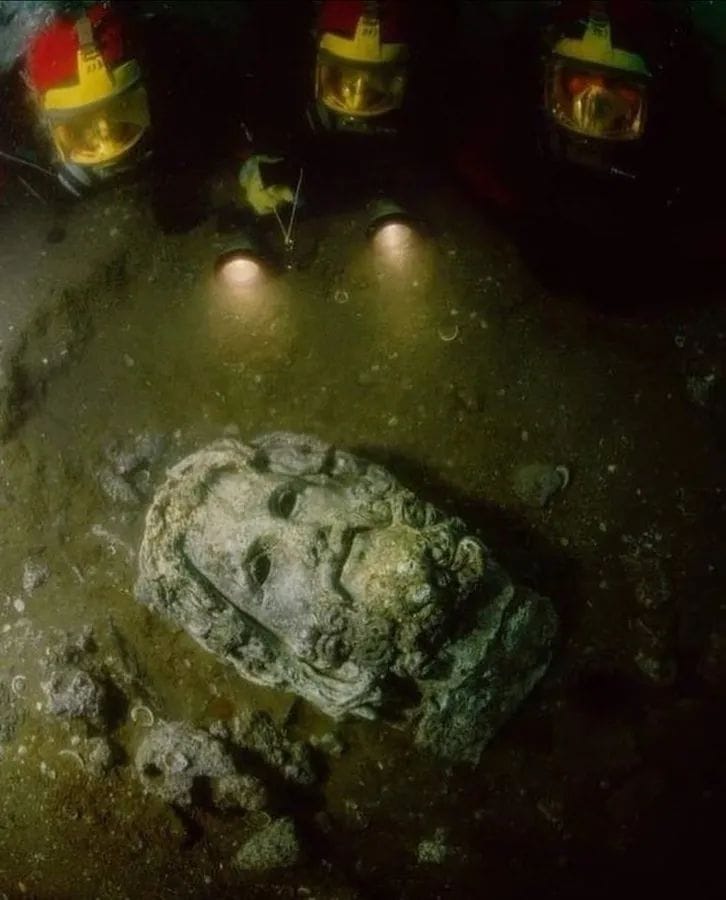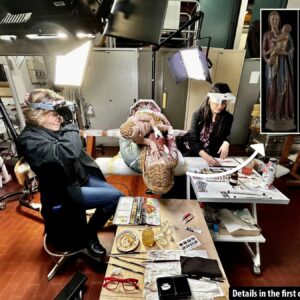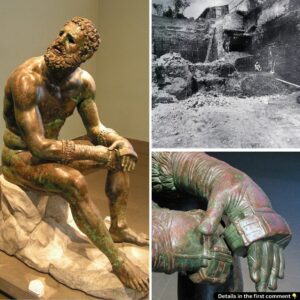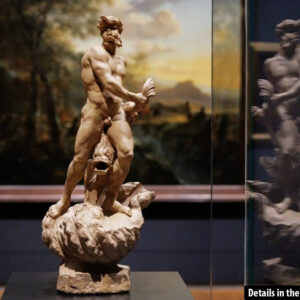The Colossal Marble Head of Serapis: A Magnificent Relic of Thonis-Herakleion
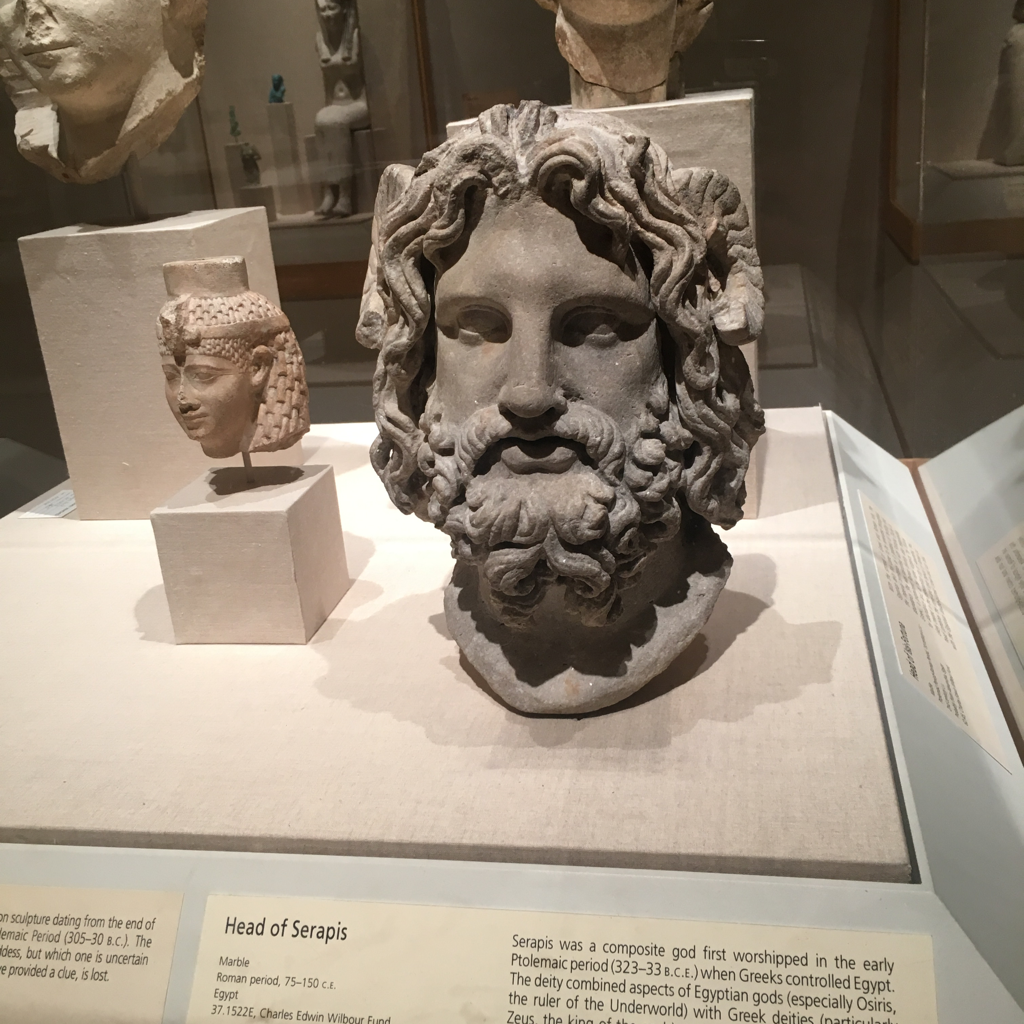
In the sunken ancient city of Thonis-Herakleion, off the northern coast of Egypt, marine archaeologists have made a truly remarkable discovery – the colossal marble head of the Greco-Egyptian god Serapis. This extraordinary relic, unearthed from the depths of the Mediterranean, stands as a testament to the rich cultural and religious heritage of this once-thriving port city.
The sheer scale of the Serapis head is awe-inspiring, measuring nearly two meters in height and weighing several tons. The level of detail and artistry is nothing short of breathtaking, with the imposing features of the deity rendered in stunning clarity. The marble, polished to a high sheen, gleams under the water’s surface, as if imbued with an otherworldly radiance.
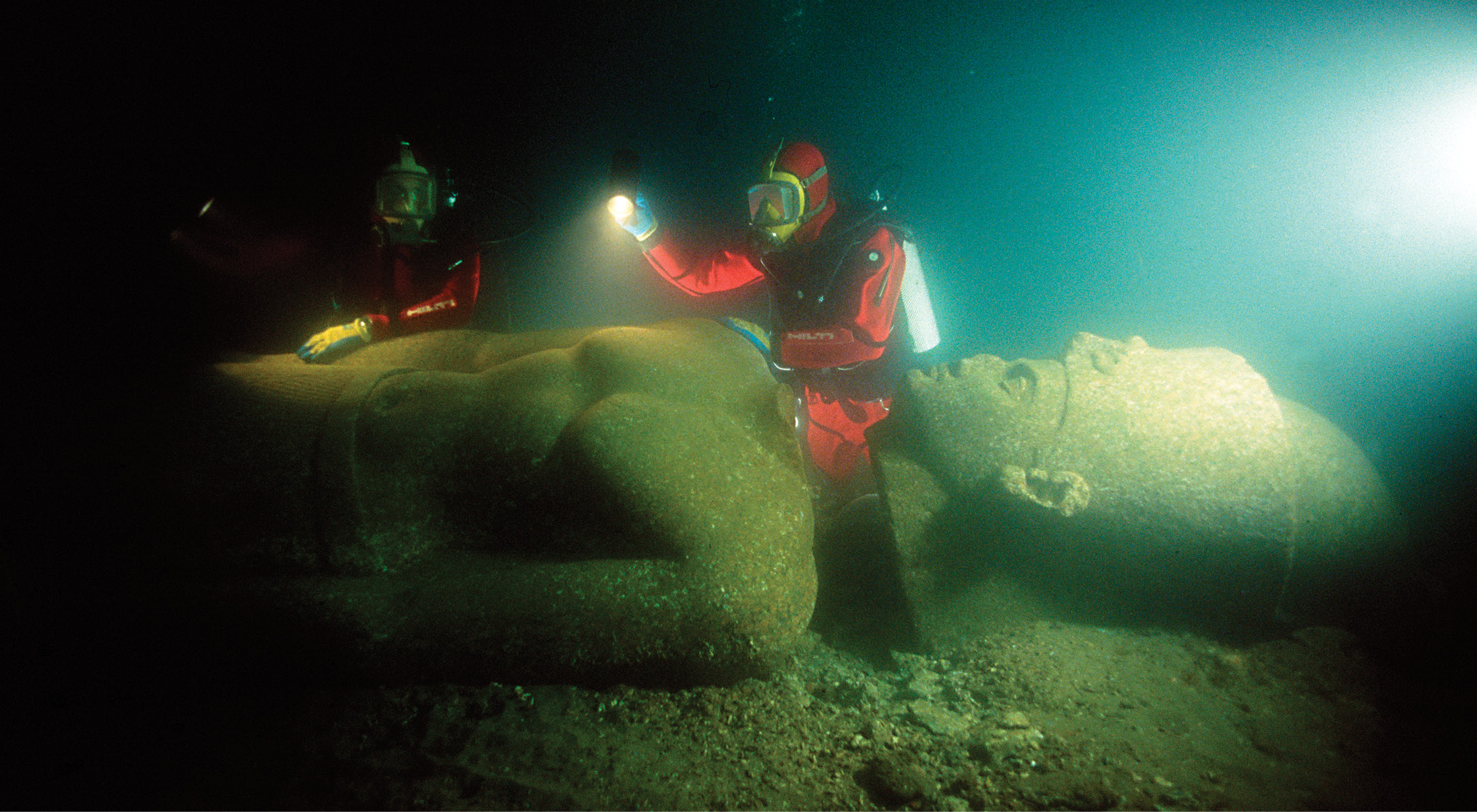
“This is an absolutely remarkable find,” commented Dr. Franck Goddio, the renowned underwater archaeologist leading the excavations at Thonis-Herakleion. “The size and quality of this Serapis head are simply staggering, and it provides us with an unparalleled glimpse into the religious and cultural practices of this ancient Mediterranean hub.”
The importance of the Serapis head cannot be overstated. As a central figure in the Greco-Egyptian pantheon, Serapis was a syncretic deity, combining elements of the Greek god Hades with the Egyptian god Osiris. He was revered as the patron of trade, commerce, and maritime affairs – qualities that perfectly aligned with the bustling port city of Thonis-Herakleion.
The discovery of this colossal marble head suggests that Serapis was the focus of elaborate religious rituals and ceremonies within the city, with the towering statue likely standing as a centerpiece in one of the many temples or shrines that once lined the harbor. The sheer size and craftsmanship of the piece speak to the wealth, influence, and cultural sophistication of Thonis-Herakleion during its heyday.
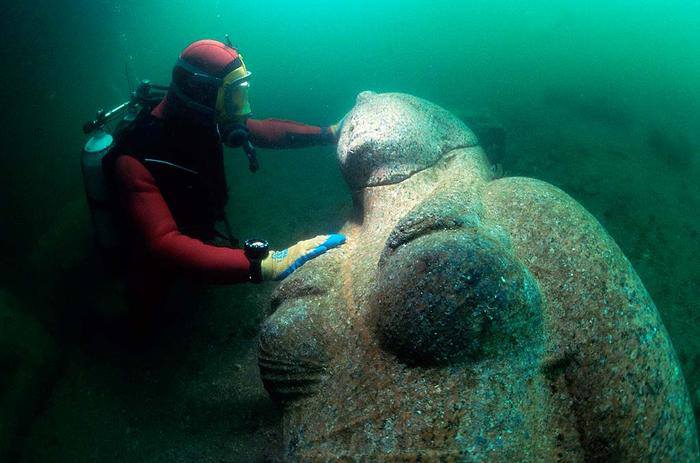
“This find is not just a remarkable archaeological discovery, but a window into the rich cultural tapestry of the ancient Mediterranean world,” remarked Dr. Goddio. “The Serapis head represents the blending of Greek and Egyptian traditions, a testament to the cosmopolitan nature of this once-thriving port city.”
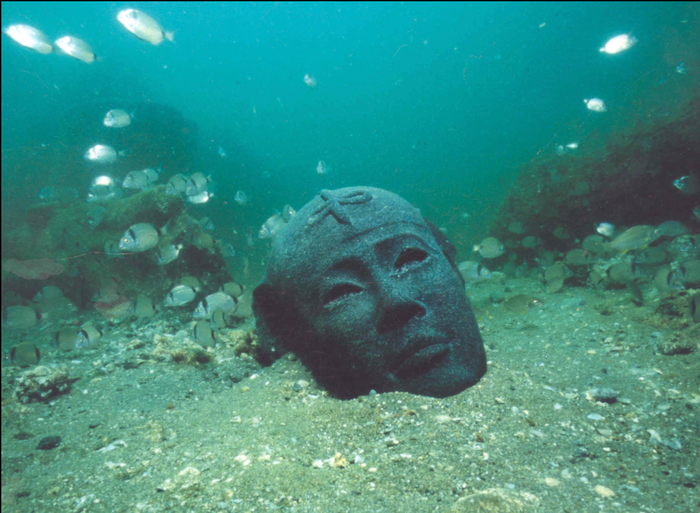
As the Serapis head is carefully extracted from the underwater tomb and transported to research facilities for further study, it is sure to captivate and inspire scholars, students, and the general public alike. This colossal relic stands as a tangible link to the vibrant history and enduring legacy of Thonis-Herakleion, a testament to the ingenuity and artistry of the ancient world.
